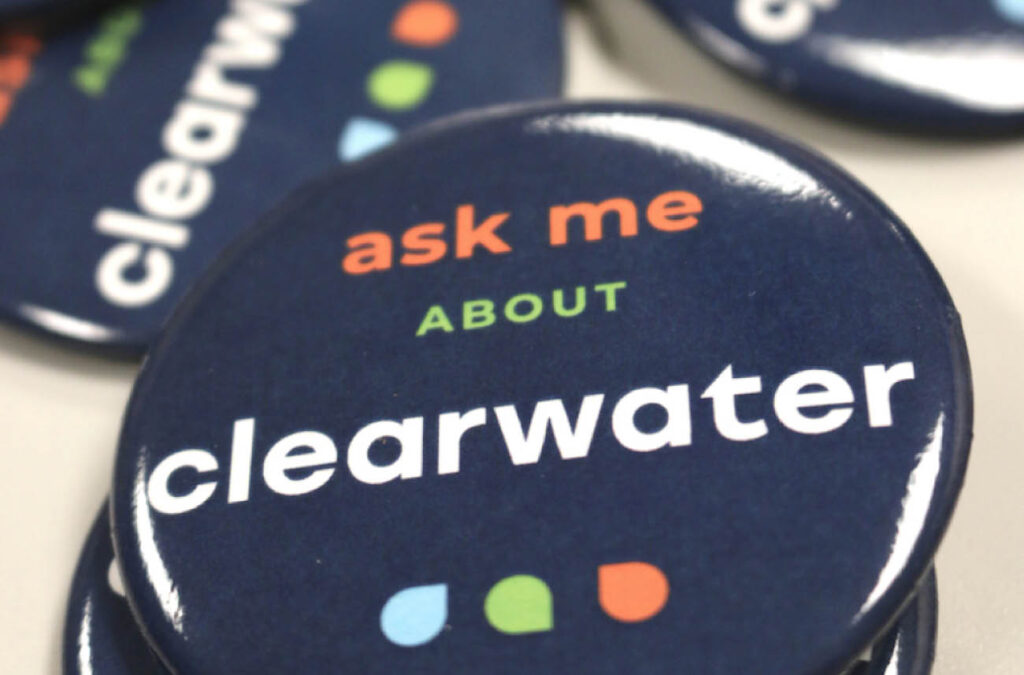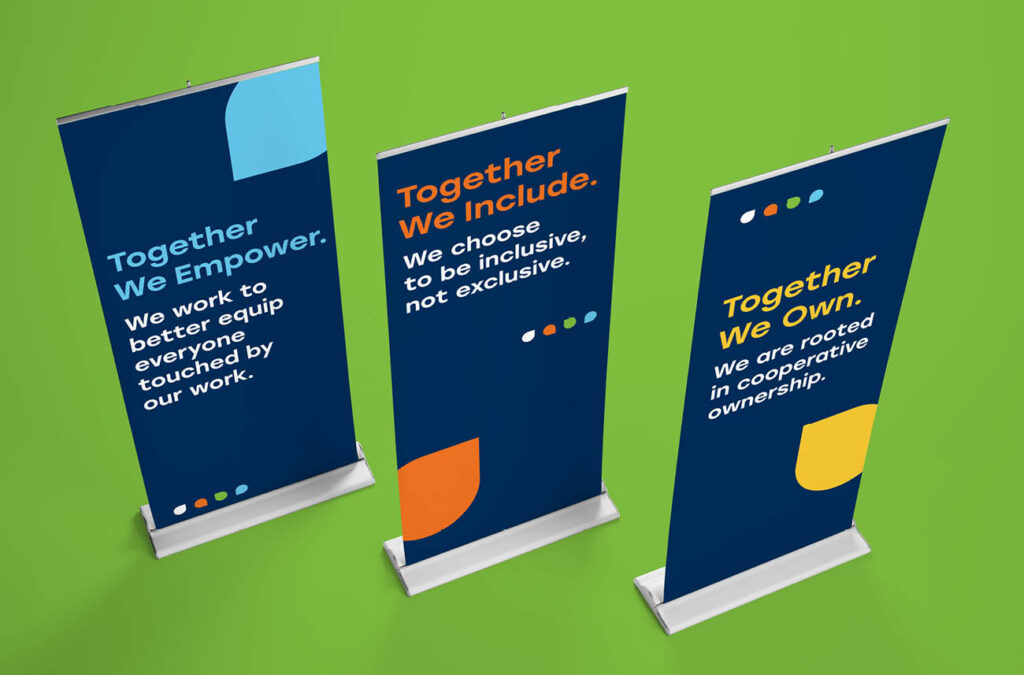What is Brand Strategy?
It takes a tenth of a second for people to form a first impression. Successful brand strategies turn that split-second impression into a high-impact relationship.
Brand strategy is the way organizations intentionally craft a message and style to express who they are and why they matter. While items like logos and mission statements are important aspects of branding, the most effective branding strategies are much more than visual collateral and messaging approaches. Strong branding involves tactically coordinated storytelling to key audiences.
For social impact organizations, excellent branding produces world-changing outcomes: stakeholders who are motivated to act. If your social impact organization is ready to intensify its influence and move the vision forward, you’re in the right place. Keep reading to dive into the following social impact brand strategy topics:
- Why Social Impact Organizations Need Brand Strategy
- Social Impact Brand Strategy: Three Examples
- Two Brand Strategy Tips That Deepen Social Impact
- Friday’s Brand Strategy Framework
Why Social Impact Organizations Need Brand Strategy
Brand strategies help social impact organizations build visual identities and messaging that win their audiences’ time and effort. Here are numbers that put that in perspective:
- 60% of consumers avoid companies with unappealing logos (even when those companies have positive reviews).
- 64% of consumers who have a relationship with a brand built it on shared values.
- 80% of men and 75% of women choose brands they recognize.
Social change happens when people’s hearts and minds (and wallets) are won over by a recognizable, inspiring story. Identifying goals, developing action plans, and designing human-centric programs inform that story, but brand strategies tell it to the right people at the right time with the right language – and in the right shade of blue.
Social Impact Brand Strategy: Three Examples
Thoughtfully constructed brand strategies empower social enterprises to unite and galvanize their most pivotal internal and external stakeholders. Find inspiration for your rebrand from the following social impact brand strategy examples.
1. Hybrid College Network
The Hybrid College Network’s unique model creates equitable opportunities but communicating its approach takes more than words. This organization used vivid colors, modern designs, and targeted communications to increase enrollment, attract funding, and reflect inclusivity. Learn more about the Hybrid College Network’s rebrand.
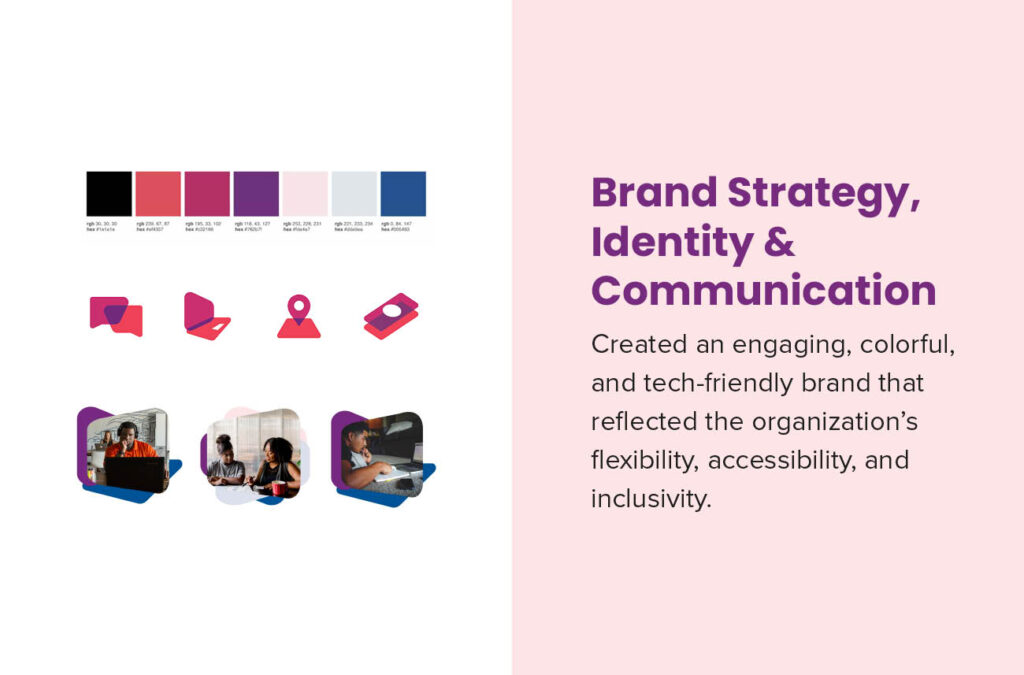
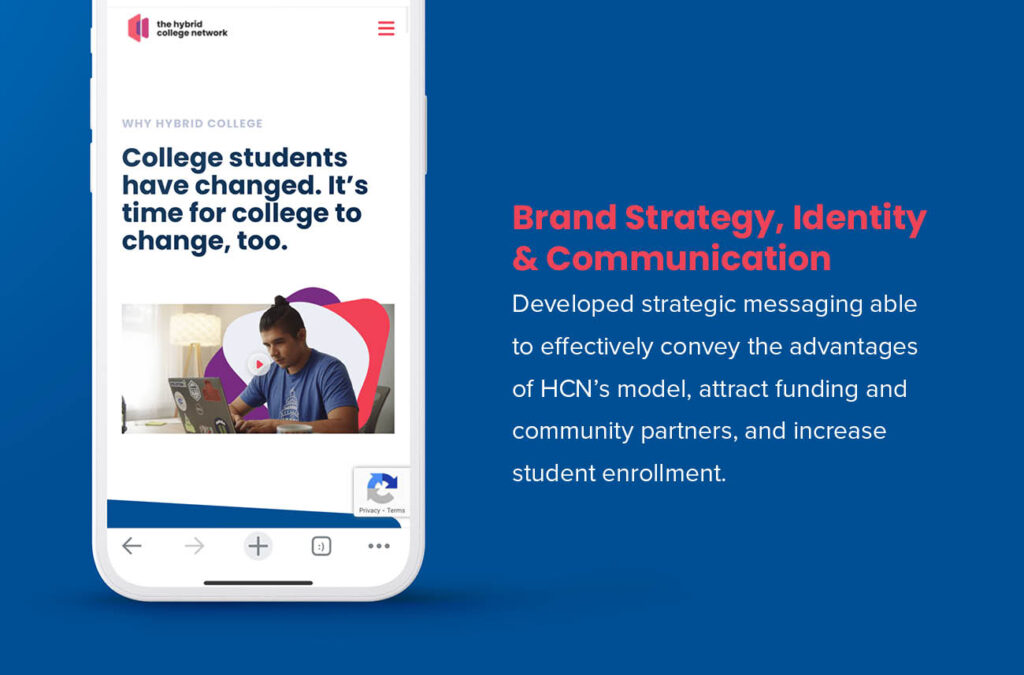
2. Edgility
Yes, Edgility is a recruiting consultancy, but – like many mission-driven organizations – it offers much more than a LinkedIn bio or “about us” section can convey. This people-first company refreshed its brand language and visual identity to better reflect its expertise and focus on diversity, equity, and inclusion. Explore Edgility’s branding approach.

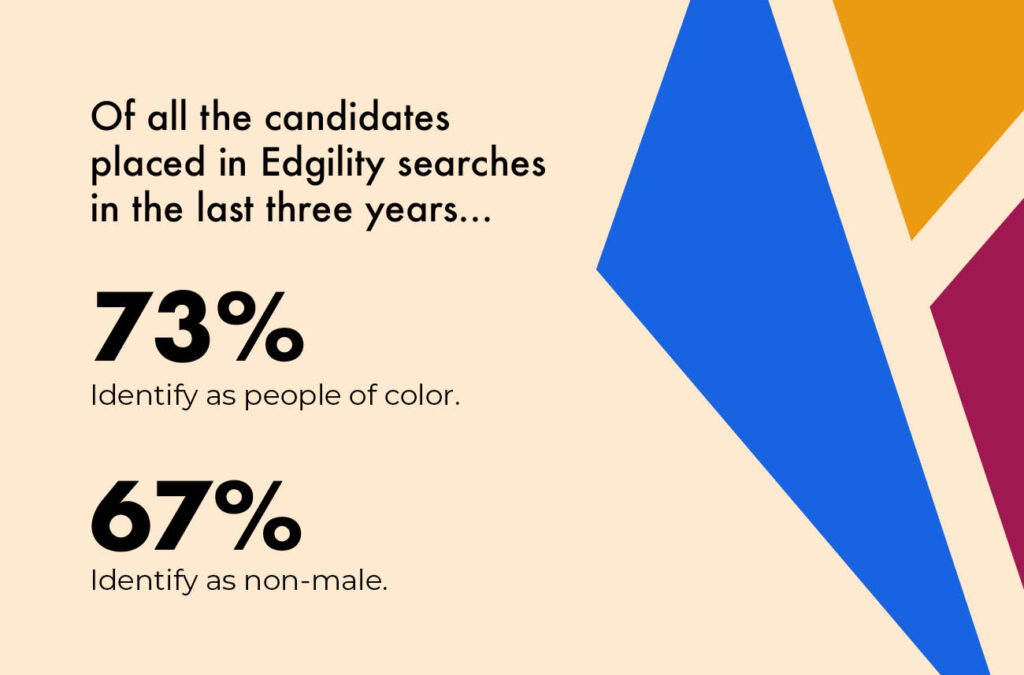
3. Clearwater Credit Union
Clearwater Credit Union was ready to offer its value-based approach to the broader community – presenting the challenge to better understand where it fits and who it serves. This 63-year-old credit union conducted intensive internal and external research to determine a new name and develop a comprehensive community engagement campaign, resulting in member expansion and the identification of significant growth opportunities. See Clearwater Credit Union’s new look.
Two Brand Strategy Tips That Deepen Social Impact
It’s easy for social impact organizations to appear cold and intimidating. Despite beautiful intentions, change-making organizations deliver ethical and political ideas that can feel more like judgments than solutions.
The best branding strategies put humanity back into the work, creating openings that nurture willingness and connections that drive progress. Here are two focus areas to begin your branding journey.
#1: Know yourself.
88% of consumers say they prefer brands that seem authentic. Clearly communicating who you are, what you value, why you exist, and how you work will help you connect with people who are already looking for you. Here are some practical ways to sharpen and convey your identity:
- Make your mission and vision visible. People expect social impact organizations to have clear, compelling visions for their communities and missions that open doors to that brighter future. Your website, annual reports, and promotional merchandise are strong vehicles for this type of messaging.
- Refine and use your brand voice. Are you “ready to rock” or “prepared to deliver”? Letting your audience’s needs drive the conversation, identify where on the spectrum between casual and formal, relaxed and frenetic, risk-averse and explosive you want your language to fall. Then, create messaging that consistently reflects your organization’s tone.
- Use design to convey and reinforce your personality. In addition to expressing your identity and professionalism, the strategic use of color, shapes, iconography, and other visual media will evoke emotional responses that words alone won’t.
#2: Serve your audience.
When you serve your audience, they respond. 90% of social media users have interacted with brands because their social media presence encouraged engagement. 91% of consumers are more likely to choose brands that present personalized content and recommendations. Here are some practical ways to deliver audience-centric branding:
- Survey your audience. Whether you’re working toward equitable student success or empowering grassroots organizations, learning and responding to the needs of the people most directly impacted by your work keeps your organization accountable.
- Choose communication channels your audience regularly uses. LinkedIn and Twitter are great platforms to connect with institutional leaders while Instagram and Facebook can be powerful tools for community engagement. Align the platforms you use with the types of conversations you want to have with your audience, and align the types of conversations you want to have with your organization’s strategic goals.
- Create content that benefits your audience. Are you seeking contributions to fill a community fund? Create a partner spotlight campaign to show appreciation for your partners. Do you want to increase enrollment in a certain program? Create video and written tutorials. Show your audience you can meet their needs by creating content that improves their lives.
Friday’s Brand Strategy Framework
At Friday, we help organizations working at the intersection of education, economic opportunity, and community development motivate internal and external audiences by exploring these areas:
- Positioning: Know your value proposition and where you belong within your sector.
- Identity: Define an aesthetic presentation and personality that reflects your organization.
- Communication: Effectively share information and ideas that resonate with your audiences.
Guided by our clients’ organizational strategies and growth opportunities, we create authentic, dynamic expressions of who they are, what they do, and how others can benefit from and support their work.
Do More Than Reach Your Audience. Move Them.
Successful social impact branding reflects organizational strength, delivers crucial information, and motivates intentional action. Like social enterprise, successful branding strategies are efficient and conscientious pathways to vibrant futures.
Ready to cultivate high-impact relationships with your audience? Download our free 90-Minute Brand Audit to bring your organization and the people you serve closer to a better tomorrow.


